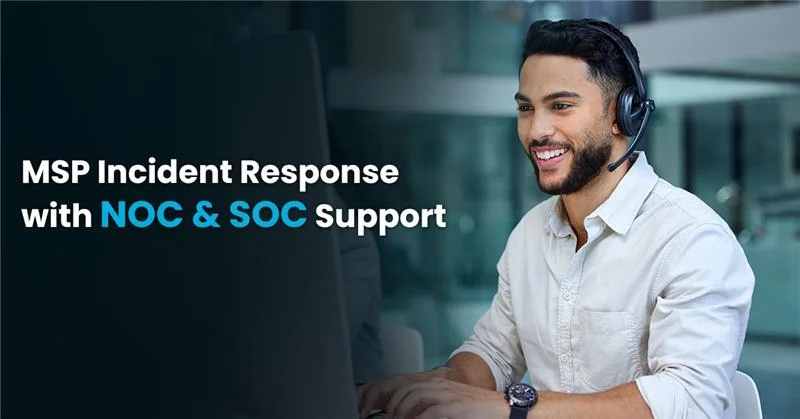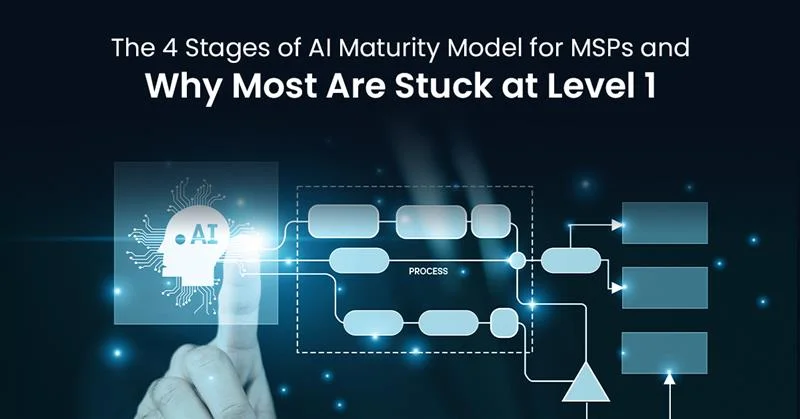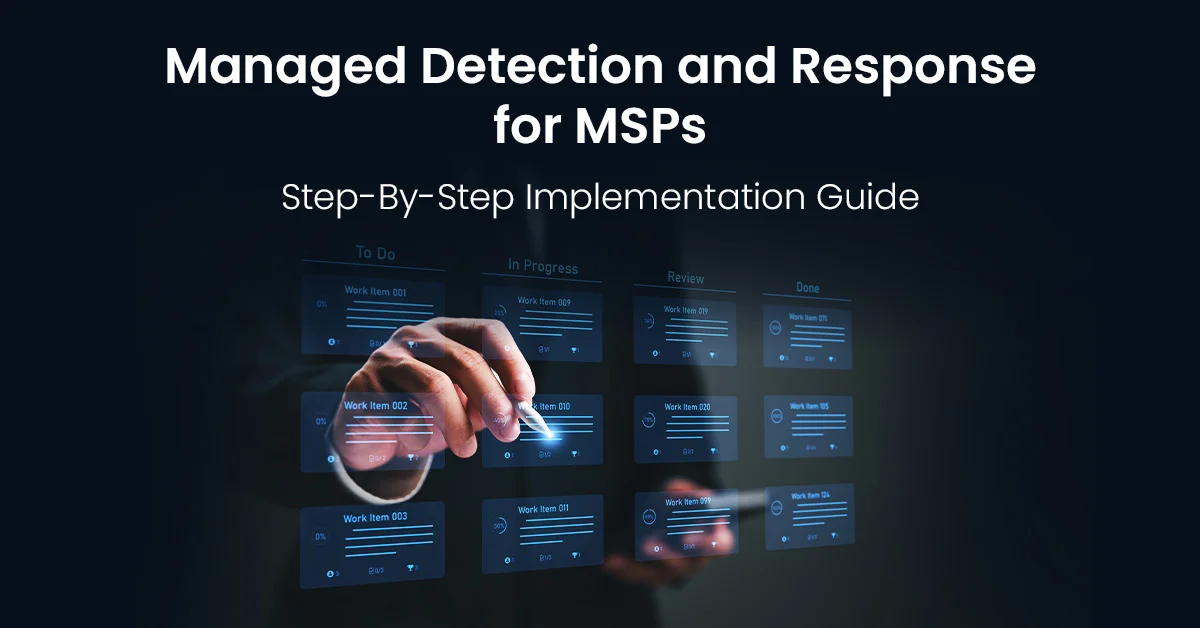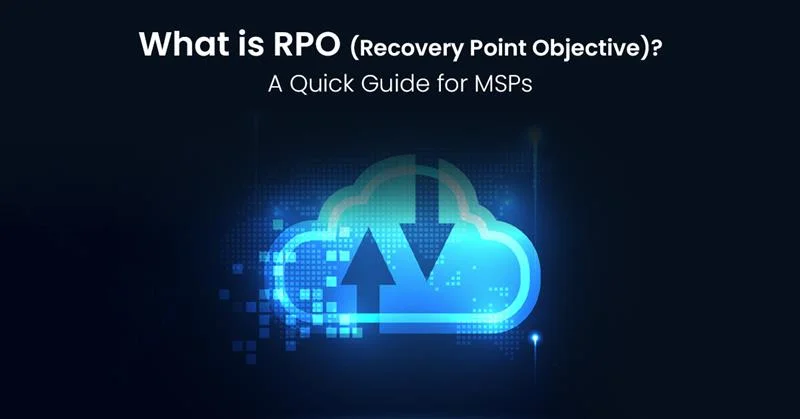When it comes to MSP incident response, every second counts. The difference between a contained threat and a full-blown disaster often comes down to how fast you detect it and how well your team responds. Effective MSP incident response requires the right combination of NOC support for MSPs and SOC Services for MSPs working together around the clock to protect your clients.
Here’s the problem: the average time to identify and contain a breach is 241 days. That’s over eight months of exposure while attackers dig through your clients’ systems. For MSPs managing multiple environments, that’s not just one client at risk, it’s all of them.
MSP incident response isn’t optional anymore. It’s the foundation of client trust, regulatory compliance, and your reputation. Without proper SOC Services for MSPs and dedicated NOC support, you’re leaving critical security gaps that can expose every client you manage.
Let’s break down what effective MSP incident response looks like and why you need both NOC and SOC teams to make it work.
What is MSP Incident Response?
MSP incident response is the structured process you use to prepare for, detect, contain, and recover from security threats across all your client environments. It’s not traditional IT support. It’s faster, more complex, and the stakes are exponentially higher.
Understanding MSP Incident Response and Its Importance
Think about what happens when a threat hits one of your clients. You’re not dealing with a single network. You’re managing multiple client environments, each with unique configurations, compliance requirements, and SLAs. A minor security slip-up doesn’t just affect one business. It can ripple across your entire client roster.
That’s why MSP incident response demands precision. You need documented procedures, 24/7 monitoring, and the ability to isolate threats before they spread. Without proper planning, incidents turn into data breaches, compliance violations, and client defections.
Why Incident Response Planning is Critical for MSPs
Here’s a stat that should wake you up: organizations with incident response teams and regular testing save an average of $1.49 million per breach. Yet most MSPs are winging it without formal plans.
Remote management adds another layer of complexity to MSP incident response. You’re not on-site. You’re managing everything through remote tools, which means visibility gaps and slower containment if your monitoring isn’t airtight.
Client trust lives and dies on your ability to respond effectively. One botched incident can cost you multiple contracts and destroy years of reputation building. That’s why incident response planning isn’t something you get around to eventually. It’s something you need yesterday.
How NOC Support for MSPs Enables Faster MSP Incident Response
NOC engineers are your first line of defense in MSP incident response. They’re the ones monitoring infrastructure 24/7, catching anomalies before they become disasters, and coordinating containment when threats surface.
The Role of NOC Engineers in Incident Response
NOC support for MSPs provides continuous network surveillance across all client environments simultaneously. When something unusual happens, your NOC team sees it immediately and escalates based on predefined protocols.
Early detection is everything. The longer a threat sits undetected, the more damage it causes. NOC engineers provide real-time visibility that catches issues in minutes or hours, not days or weeks.
Response time targets matter. Best-in-class MSPs aim for first response within one hour and initial containment within hours, not days. That speed only happens when you have dedicated NOC support for MSPs monitoring around the clock.
NOC Support for MSPs During Active Incidents
When an incident hits, NOC engineers jump into action with three immediate priorities:
- Isolate affected systems to prevent spread across multi-tenant environments
- Maintain network stability for unaffected systems and clients
- Coordinate with SOC for security-specific containment actions
This is where incident management MSP operations shine. NOC teams manage separate client environments to prevent cross-contamination, which is critical when you’re running shared infrastructure.
Documentation happens in real-time. Every action, every system change, every communication gets logged. This isn’t busywork. It’s what you need for post-incident analysis, compliance reporting, and improving your response procedures.
Infrastructure Management in Incident Management MSP Operations
NOC engineers don’t just watch systems. They actively manage infrastructure during MSP incident response by rerouting traffic to failover hosts for business continuity, creating forensic images before remediation begins, managing system backups to ensure clean recovery points, and keeping stakeholders informed throughout the resolution process.
The goal is simple: keep unaffected systems running while containing the threat. That dual responsibility requires dedicated NOC support for MSPs who understand both infrastructure management and incident response protocols.
Why SOC Support for MSPs Is Essential for Security Incident Response
NOC teams handle infrastructure. SOC teams handle threats. For effective MSP incident response, you need both working together seamlessly.
Advanced Threat Detection with SOC Support for MSPs
SOC engineers use tools that go beyond basic monitoring. We’re talking SIEM platforms, XDR technology, threat intelligence feeds, and behavioral analysis that catches sophisticated attacks before they execute their payloads.
24/7 security monitoring by certified analysts means you’re not relying on automated alerts alone. Human expertise spots patterns that algorithms miss, especially with emerging threats and zero-day exploits.
The financial impact is real. Organizations using advanced detection and response tools can cut breach lifecycles significantly, which translates directly to lower costs and less damage.
How SOC Engineers Handle Security-Focused MSP Incident Response
When SOC support for MSPs identifies a threat, they move fast with immediate quarantine of compromised systems and credentials, forensic analysis to determine attack scope and entry points, malware removal and complete system remediation, and compliance reporting for regulatory requirements like HIPAA and GDPR.
Evidence preservation is critical. If the incident leads to legal proceedings or insurance claims, you need pristine forensic data. SOC engineers know how to collect and preserve evidence without compromising the investigation.
Integrated Incident Response Planning with SOC Services
Pre-built response playbooks save precious time during MSP incident response. Instead of figuring out next steps during an active attack, SOC teams follow documented procedures for common threats like ransomware, phishing, and data breaches.
Automated response capabilities handle repetitive tasks instantly. Isolating compromised accounts, blocking malicious IPs, and triggering backup procedures all happen without waiting for manual intervention.
Coordination between SOC, NOC, and client teams makes the difference between chaos and controlled response. Everyone knows their role, communication flows smoothly, and incident management MSP operations run like a well-oiled machine.
Building Effective Incident Response Plans for MSPs
Want to build a culture where MSP incident response works every time? Start with a solid plan and test it relentlessly.
Key Components of Incident Response Planning
Your plan needs documented procedures for every phase of incident response, clearly defined roles including who communicates with clients and what language to use, communication protocols for clients, stakeholders, lawyers, insurance, and law enforcement, escalation paths so everyone knows who makes decisions when, tools and access controls necessary for rapid response, and integration with BCDR strategy for business continuity.
This isn’t a document you write once and forget. Your incident response planning should be reviewed quarterly at minimum and updated immediately after any significant incident or when new threats emerge.
Best Practices for Incident Management MSP Operations
Create client-specific procedures within your master framework. Identify backup decision makers for all key roles. Determine your most valuable assets and critical data beforehand. Call in experts early when major incidents occur. Develop message templates to streamline communications with clients and stakeholders.
One critical best practice: tabletop exercises. These simulated drills identify holes in your knowledge or processes before real incidents expose them. Regular testing turns plans from theory into muscle memory.
Training and Preparation for Incident Response
Your team needs hands-on practice. Run simulated incident drills with all stakeholders participating. Include penetration testing to validate whether your defenses actually work.
Client education matters too. Train clients on incident identification and initial response steps. The faster they report suspicious activity, the faster your MSP incident response kicks in.
Documentation templates streamline communication during high-stress situations. When you’re managing an active breach, the last thing you want is someone asking “what do we tell the client?” Pre-approved templates provide consistent, accurate messaging.
The Six Phases of Effective MSP Incident Response
Every MSP incident response follows the same lifecycle. Understanding these phases helps you build processes that work under pressure.
Executing the Incident Response Lifecycle
- Preparation establishes plans, acquires tools, trains teams, and sets up access controls.
- Detection & Analysis identifies threats through monitoring, logs, and SIEM alerts.
- Containment implements short-term isolation first, then sustained containment while investigating.
- Eradication removes root cause, eliminates malware, and closes vulnerabilities.
- Recovery restores systems from clean backups, tests thoroughly, and monitors for reinfection.
- Post-Incident Review documents lessons learned, updates procedures, and improves defenses.
Each phase builds on the previous one. Skip steps and you risk incomplete remediation or recurring incidents.
Why NOC and SOC Coordination Is Essential in Incident Response
NOC support for MSPs monitors infrastructure health. SOC support for MSPs analyzes security threats. Together, they provide complete visibility across all systems and all clients.
Seamless handoffs between teams accelerate MSP incident response times. When NOC detects an anomaly, SOC investigates immediately without information getting lost in translation.
Dual documentation ensures compliance and captures everything needed for post-incident analysis. Both teams log their actions independently, creating redundant records that protect you during audits.
Automated notifications keep the right stakeholders informed at each phase. Clients don’t want radio silence during incidents. They want regular updates showing progress and explaining next steps.
Elevate Your MSP Incident Response with IT By Design’s SOC Services
Managing multiple client environments around the clock while responding to sophisticated threats within minutes is overwhelming without dedicated expertise. Without proper NOC support for MSPs and SOC support for MSPs, you’re stuck with slow response times and incomplete threat visibility that leave every client vulnerable.
IT By Design’s SOC Services eliminate these critical gaps.
Our certified SOC engineers and experienced NOC engineers provide 24/7 threat detection and rapid response, proven incident management planning with documented playbooks, seamless NOC and SOC coordination for complete infrastructure and security management, and comprehensive compliance support that grows with your client base.
Whether you’re building your first incident response plan or struggling to maintain 24/7 coverage, IT By Design’s SOC Services provide the expertise you need. Stop leaving your clients vulnerable. Discover how our integrated NOC and SOC support transforms incident response into your strongest competitive advantage.
FAQs (Frequently Asked Questions)
Q1. What is MSP incident response?
A. MSP incident response is the structured process managed service providers use to prepare for, detect, contain, eradicate, and recover from cybersecurity incidents across multiple client environments while minimizing damage and downtime.
Q2. Why do MSPs need both NOC and SOC support for incident response?
A. NOC support provides infrastructure monitoring and system management to maintain availability, while SOC support delivers security-specific threat detection, analysis, and remediation; both are essential for comprehensive MSP incident response.
Q3. How long should MSP incident response take?
A. Best-in-class MSPs aim for first response within one hour and initial containment within minutes to hours, with full resolution typically ranging from 8 to 24 hours depending on incident severity.
Q4. What are the key components of an incident response plan?
A. Essential components include documented procedures, defined team roles, communication protocols, escalation paths, response playbooks, access controls, monitoring tools, and regular testing through tabletop exercises and drills.
Q5. How often should incident response plans be updated?
A. Incident response plans should be reviewed and updated at least quarterly, and immediately after any significant incident, when new threats emerge, or when tools or client requirements change.








